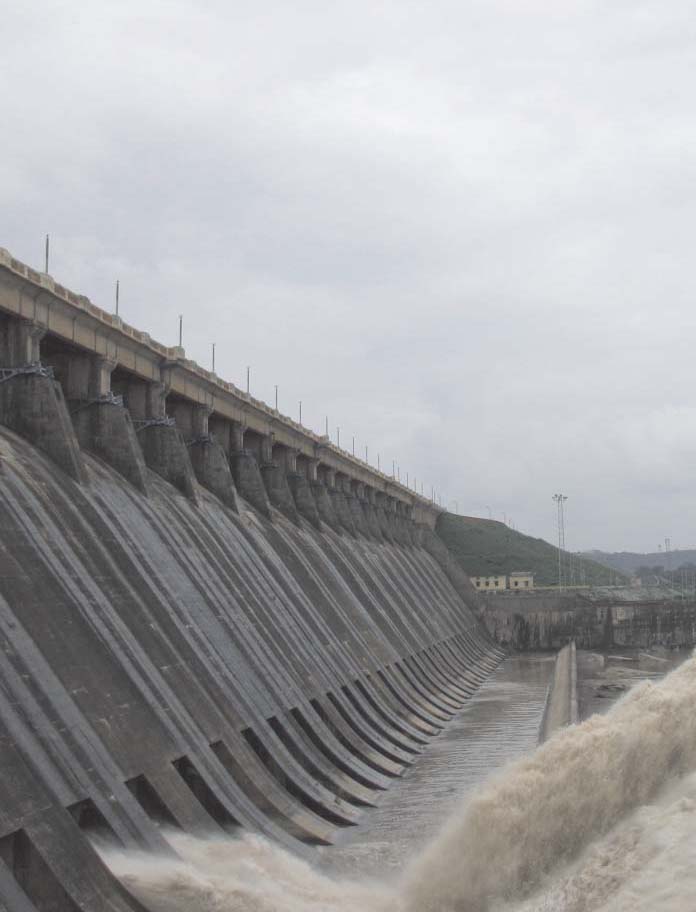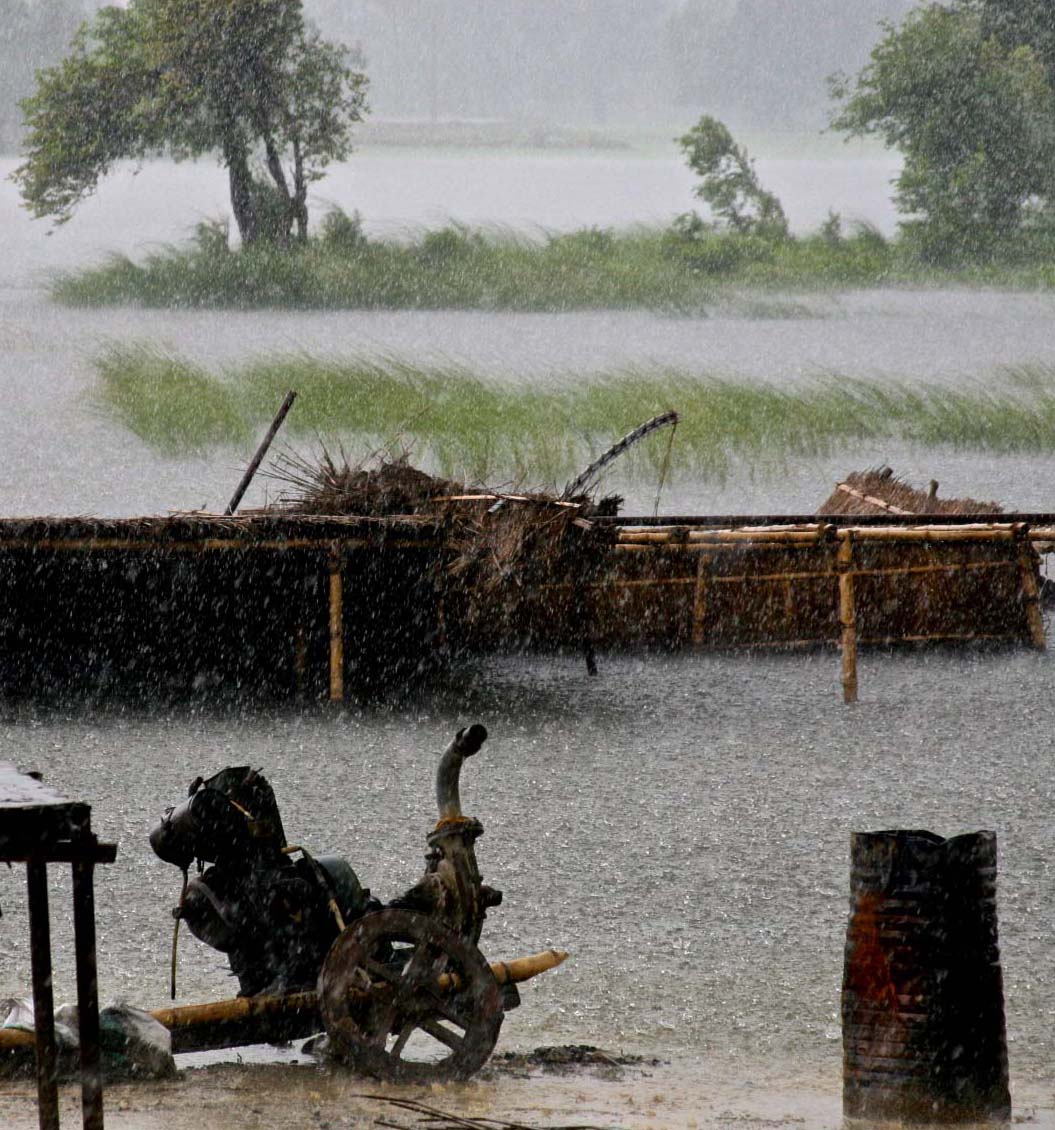 This action research report by the Forum for Policy Dialogue on Water Conflicts in India maps the variegated issues contributing to the water conflicts around the Hirakud reservoir, brings together the response of policy makers and stakeholders, and suggests options and methodologies for initiating and creating preconditions for resolving the conflict.
This action research report by the Forum for Policy Dialogue on Water Conflicts in India maps the variegated issues contributing to the water conflicts around the Hirakud reservoir, brings together the response of policy makers and stakeholders, and suggests options and methodologies for initiating and creating preconditions for resolving the conflict.
The recent conflict is largely seen as one between the farmers in the Hirakud command and the Government of Odisha over the allocation of water from the reservoir to industries. However, the water conflicts around Hirakud are more complex. They are part of a classic contestation over natural resources in fast-developing countries with neoliberal policies pushing reforms and favouring industries and the market, while local communities struggle to maintain their livelihoods and institutions.
The main objective of the action research was to engage with conflicts around the Hirakud dam, study their inter-relations, and contribute to methodologies for resolving the conflict and raising awareness. The Odisha State Centre of the Forum proposed to do this by interfacing with local civil society groups, social movements and other stakeholders, bringing them together, understanding the other interconnected conflicts around the Hirakud dam, learning from the experience, and raising awareness about the issues.
The inability of the Hirakud dam to control floods has been well documented in terms of the flow downstream at Mundali, and the damage in the delta in terms of the area affected and damage to life and property by floods. The media and civil society groups attribute this failure to the ineffectiveness of the reservoir, reduced storage capacity, and non-compliance of the reservoir operation with the ‘rule curve’, to accommodate industrial and power production needs.
The dam protagonists point to the lack of a basin-wide approach and the delay in the construction of downstream storage structures and say that without the dam, the delta head would have experienced severe floods, some of which would have wiped out Cuttack and the bulk of the delta area.
Irrespective of the arguments either for or against the dam, with aging, climate change and economic development, Hirakud seems to have failed in reducing the incidence and damage due to floods. The Hirakud dam has been dogged with conflicts right since its inception. Before construction, it faced the resistance of the people in its submergence area. Meanwhile industrial and urban use has been growing, and received a spurt with post-1990 liberalisation.
Half a century after its construction, Hirakud conflicts moved to the command areas, where farmers resisted industrial water allocation and intake from the reservoir. The increasing entry of thermal and aluminium industries is transforming the Sambalpur-Jharsuguda region rapidly into the largest conglomerate of smelter and power industrial units in the world. It is unlikely that such fast-paced growth will be sustained environmentally. New conflicts have now emerged around pollution of the reservoir and competition for irrigation water.
water allocation and intake from the reservoir. The increasing entry of thermal and aluminium industries is transforming the Sambalpur-Jharsuguda region rapidly into the largest conglomerate of smelter and power industrial units in the world. It is unlikely that such fast-paced growth will be sustained environmentally. New conflicts have now emerged around pollution of the reservoir and competition for irrigation water.
The key recommendations of the action research include -
Revisiting promises made: For the government and the dam authorities, there is a need to systematically revisit and review earlier decisions and promises keeping equity and justice at par if not above economic and efficiency considerations.
Inclusive reservoir management decision making and implementation: It is important to shift to an inclusive and transparent decision making process which is accountable to stakeholders, especially in respect of decisions based on scientific and hydrological considerations which may not be immediately apparent to stakeholders. It is also important to monitor implementation of decisions in the same inclusive manner.
Adapting reservoir operation to the changing context: There is a need to modify reservoir operations to adapt to global climate change as well as hydrological changes and economic activities in the river basin as a whole.
Evolving an interactive water use plan: The measures above will work only if we can increase efficiency and economic gain without sacrificing equity, justice or sustainability. This involves changing the way we use water, the crops we grow, and the institutions we craft around it and accordingly reassess the water requirement for agriculture, fisheries, and other livelihood purposes in the Hirakud command.
Piloting an action research programme: However, the real challenge lies ahead, in bringing all this to the ground. What is required is a pilot action research undertaken along these lines. Such a pilot would need to cover not only the technical aspects of water saving but also the institutional mechanisms necessary to bring different water users together to develop and implement a commonly agreed upon plan for the utilisation of water from the Hirakud dam.
/articles/floods-fields-and-factories-towards-resolving-conflicts-around-hirakud-dam